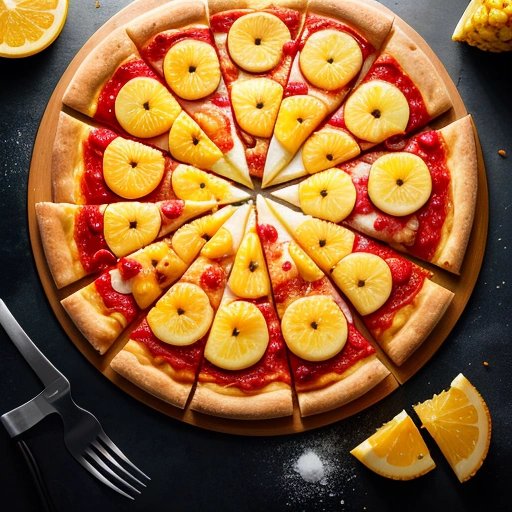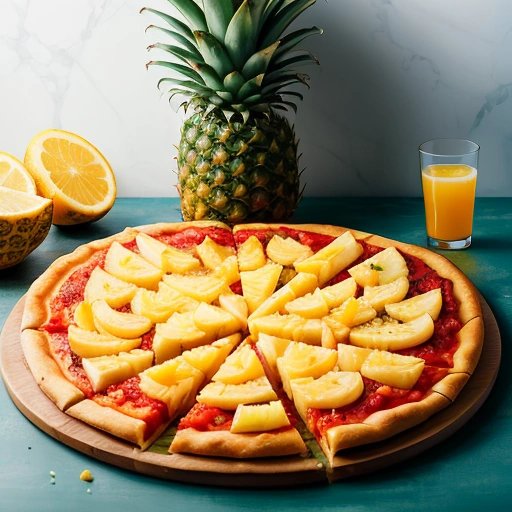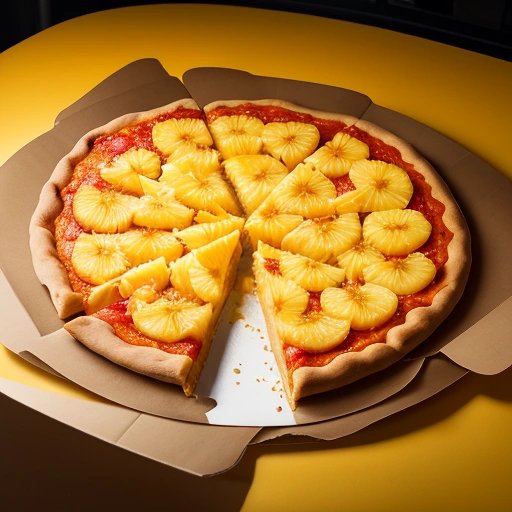In a world torn apart by differences, conflicts arise over the smallest matters. The battlefields are no longer restricted to tangible terrains. Now, they exist on the plane of ideas, opinions, and yes, even food preferences. At the cornerstone of cuisine conflict, we find the seemingly innocuous decision of whether pineapple belongs on a pizza.
The story begins in the ancient times, with the invention of pizza. Unlike today's culinary landscape, where wild experimentation is not only accepted but also celebrated, many moons ago, pizza was strictly confined to a few ingredients. Tomatoes, cheese, and a select array of meats. Such was the tradition, such was the statute, and such was the consensus. Until one fateful day, pineapple entered the scene.
Humbled by the fruit's intrepid venture into the sacred pizza constituency, many optimists embraced the unique combination of tangy pineapple and savoury cheese. They heralded it as an evolution, a necessary mutation of sorts to ensure the survival of pizza-kind in the diverse global culinary ecosystem.
Yet, not everyone echoed this sentiment. A large faction, staunch traditionalists to the core, decried the tainting of their beloved dish. The controversy raged on, spilling from the shadows of kitchens and into the harsh glare of social media. A battle that had once been fought in hushed whispers now turned into an uproar, amplified by the common citizen's access to a global platform.
The Traditionalists argued with fervour about the sanctity of their beloved flatbread, while the Innovators defended their liberty. To incorporate the humble pineapple into their favourite cheesy treat, it was a whirlpool of opinions, ideas, traditions, and beliefs, stirring up a storm in the culinary cosmos.
These were not just fervorous debates about food, these engagements represented much more. They morphed into symbolic representations of the ongoing struggle between clinging onto traditions and embracing change. Pineapple on pizza was not simply a culinary choice anymore, it had turned into an ideology, a beacon representing open-mindedness on one side and a horcrux encapsulating the love for tradition on the other.
As this war continues, one question echoes louder with each passing second. Does pineapple belong on Pizza? Will the torch bearers of culinary evolution win, or will the traditionalists emerge victorious, restoring the baroque pizza to its former glory? Well, that's a question only time can answer.
One thing is certain though. Behind every slice of pineapple-topped pizza, there lies a tale of a culinary battle, an ideological war, and a testament to the human spirit's resilient ability to fight for what it believes in, be it world peace or a mere pizza topping. Who knew that the humble pizza could serve as a battlefield for one of the most passionately contended culinary debates of our era?
In the end, amidst the clanging of cookware and the clatter of keyboards, we grasp the magnitude of this paradox – the Pineapple Pizza Paradox. A world torn by taste, united by the love for a dish, yet divided by a mere topping. It is a story as eons old as time and as relevant today as ever.


